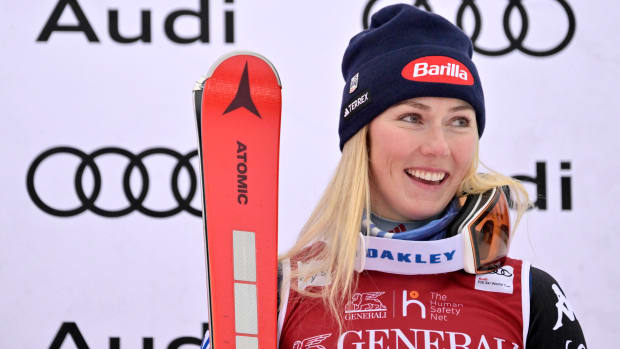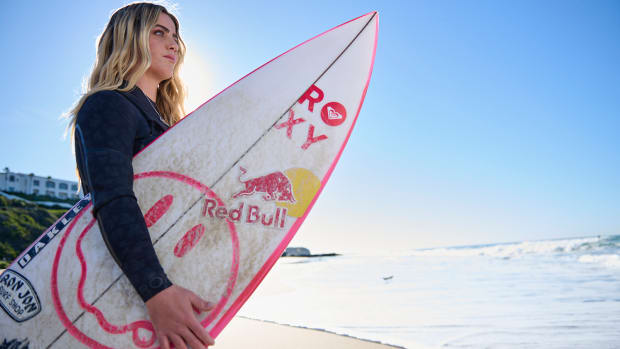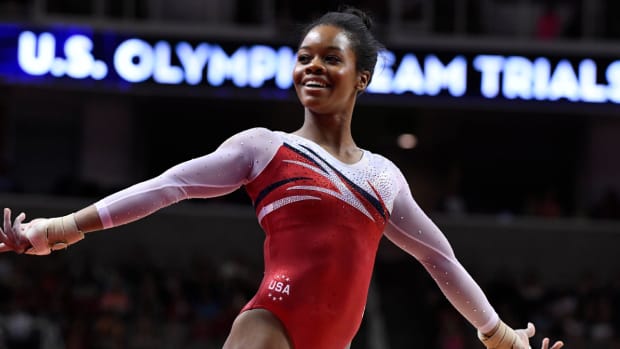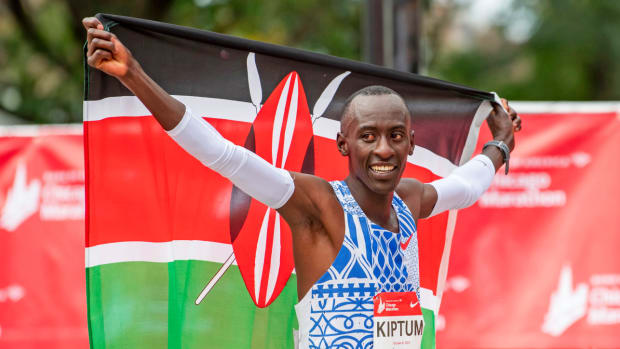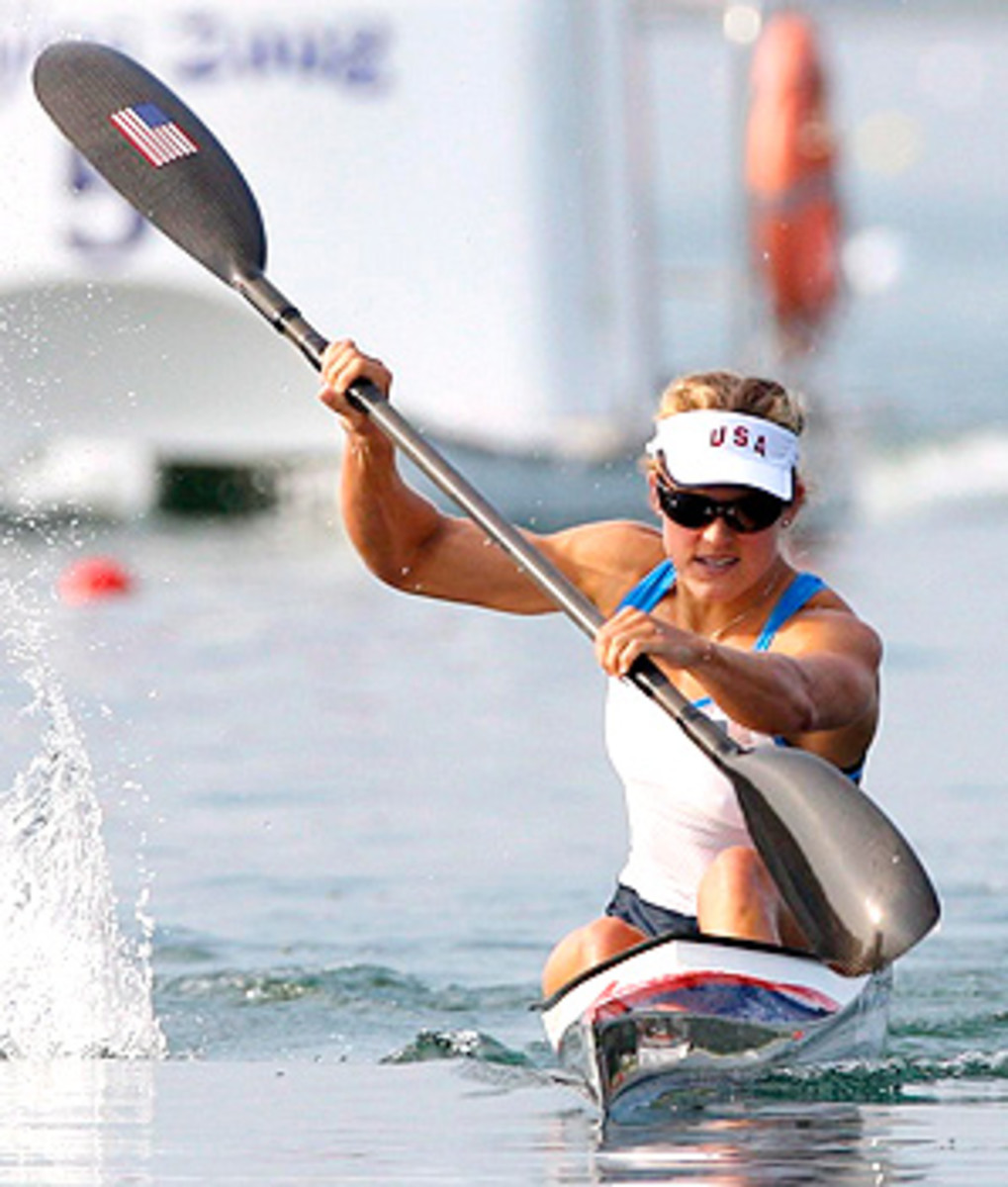
Kayaker Johnson battles more than waves in route to Olympic glory
At the beginning of every practice, so it will be muscle memory by race day, she starts with 1000 meters steady to get her muscles loose. Then, she throws in some shorter, more intense periods and practice starts to get her heart going. Before launching for every race, she eats breakfast, stretches while listening to her iPod, and then reviews strategy with her coach. Every time she goes somewhere unknown, she finds out where the bathroom is, just in case.
"It's become second nature," she says with a laugh.
For most athletes, a regular warmup and pre-competition schedule are fairly standard. But Carrie Johnson is unique. In addition to being an Olympic sprint kayaker, she suffers from Crohn's disease, a chronic inflammatory intestinal disease that affects roughly 750,000 Americans and has no known cure.
For Johnson, there is constant maintenance to be done in terms of being vigilant about medication and aware of possible warning signs of a flare-up, but the focus has always been kayaking first.
When Johnson was 13, she was introduced to the sport of kayaking by an instructor of the Junior Lifeguard program she was participating in, who was a 1992 sprint kayak Olympian. Johnson took to it immediately. At the time she was a competitive gymnast, so she had the requisite strength and balance; however, when she broke both the bones in her right forearm during a tumbling routine that winter, she switched over to kayaking full time.
The Olympic training center in Chula Vista is some 10 miles from her home in San Diego, so it did not take long before officials noticed her and sent her through the national team system. She was competing internationally by the time she was 18.
In 2003, when a few weeks of feeling unusually fatigued and struggling to recover from normal workouts turned into increasingly severe gastrointestinal symptoms, she sought medical help, first from the training staff at the training center in Chula Vista, then from physicians. It took her nearly six months and five doctors before a proctologist directed her to a gastroenterologist who was finally able to diagnose her.
"They just kept trying to treat the symptoms for a long time," she explains. "I think the worst part was not having a diagnosis immediately ... [but then] I knew what it was, it had a name and there was something specific that I was dealing with."
She immediately took to the Internet and the library to read up on her diagnosis. Unfortunately, most of the literature she encountered was very specific about the worst-case scenario, so it took some reassurance from her doctor to convince her that she would be OK.
At the time, Johnson had qualified for a spot in a four-person kayak on the 2003 World Championships team, but had to decline due to the uncertainty surrounding her health. Once it was clear that the disease was not life threatening, she set about returning to the elite level as a kayaker. Her parents were less certain that she should keep training at such intensity, but her drive convinced them.
"It was stressful for us because it's an unknown and there's no cure. There were a lot of trying times and second thoughts," says her father Ron. "I've come to sort of a balance with it. I think she handles it well."
Often the symptoms of Crohn's disease are mild, and now that she has come to recognize them as they begin, Johnson can seek medical attention early enough in the process to make a difference. But sometimes she simply wears down.
During the lead-in to the 2008 Olympics in Beijing, the volume of Johnson's training began to overwhelm her. Not long after the Games were over, she contracted mono, and just as she was recovering from that, the Crohn's flared up. Johnson had to spend a week in the hospital trying to treat it with medication rather than the last resort, surgery. The doctors were successful in keeping her out of the operating room, but much like in 2003, she had to take 2009 off from training and competing to get her health back.
And in large measure, she has gotten her health back. Johnson qualified for the 2004 Games less than a year after her diagnosis, beating two former Olympians at trials in a moment her father calls his favorite of her career so far. Then, a year to the week after her release from the hospital in 2009, Johnson placed 10th at the 2010 World Championships in a two-person kayak.
After the 2009 scare, she and coach Stein Jorgensen, a sprint kayaker who competed at the 1996 and 2000 Games and now volunteers for USA Canoe/Kayak, designed a new, lower-volume plan to keep her improving without risking her health.
"We wanted her to do enough work to get the job done," says Jorgensen, who has been involved in Johnson's training since she started, and has been her full time coach since 2010, "but we knew she wasn't going to have great endurance because we cut down the volume."
She reacted well to the amount of training, so they bumped it up slowly as they approached the 2011 racing cycle. At the 2011 World Championships, she settled with a 14th-place finish in the 200-meter distance in a one-person kayak and a 17th-place finish in the 500 meters less than she had hoped for after an excellent race in the heats. However, unknown to anyone but her, she hadn't felt well leading into the finals.
"In my mind, it was doable for her to make the [top six]," says Jorgensen, "which would basically qualify her for the Olympic Games, but she was just thinking about [not feeling well] ... I don't think she had that supreme confidence and belief in herself."
Her swagger was back against somewhat weaker competition at the 2011 Pan American Games, where she competed against athletes she had beaten even with her disappointing finish at Worlds. She finished first in both distances, qualifying the U.S.' only women's sprint kayak entries for London. Even though she qualified the spots, she's not guaranteed to be the person who fills them but her chances are better than anyone else's, because the kayak team uses a defender system. Trials, held in June, will consist of one or two races if Johnson wins the first one, she's in. If she loses, whoever beat her will have to beat her again to take her seat.
She's cautiously optimistic about her chances. "Being the person who qualified the spot really works in my favor," she said diplomatically.
Her coach was less reticent. "She could have a bad start, not a great middle, and a mediocre finish and still win," he said confidently. "She's the only world-class female sprint kayaker."
